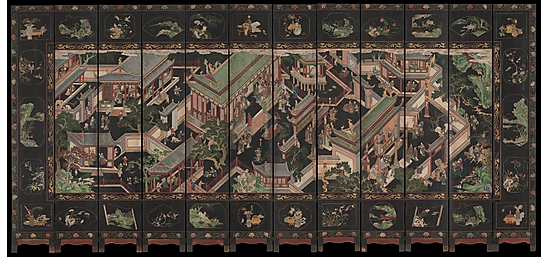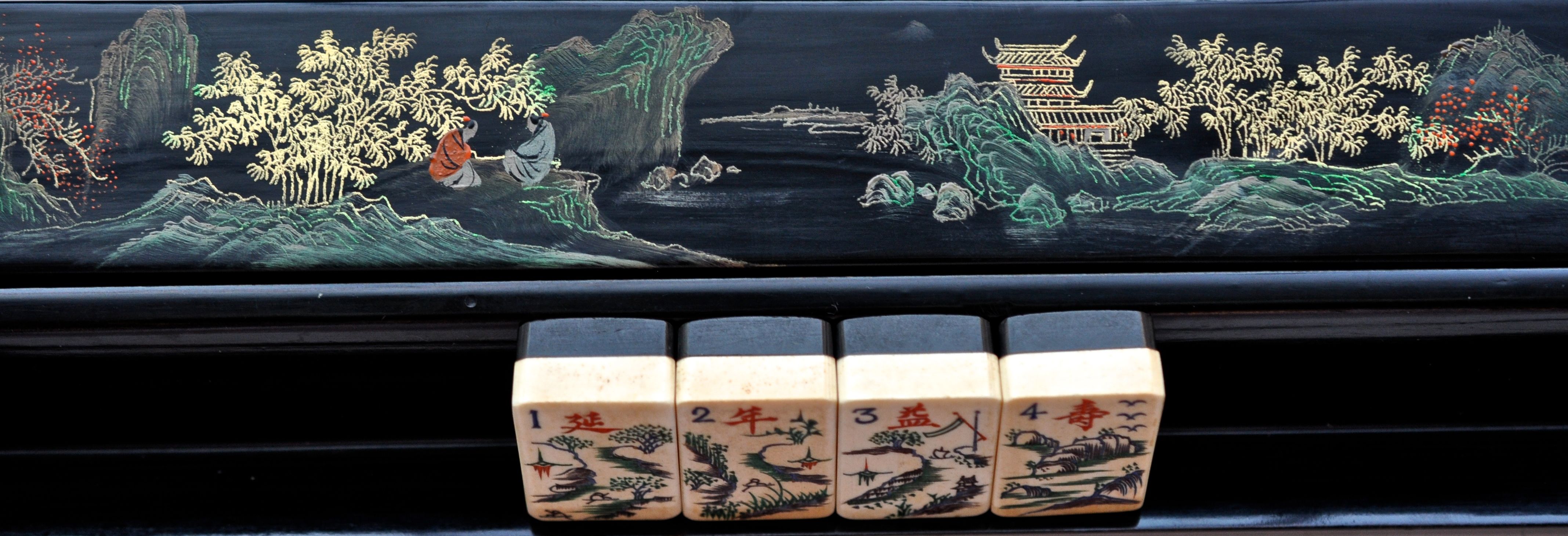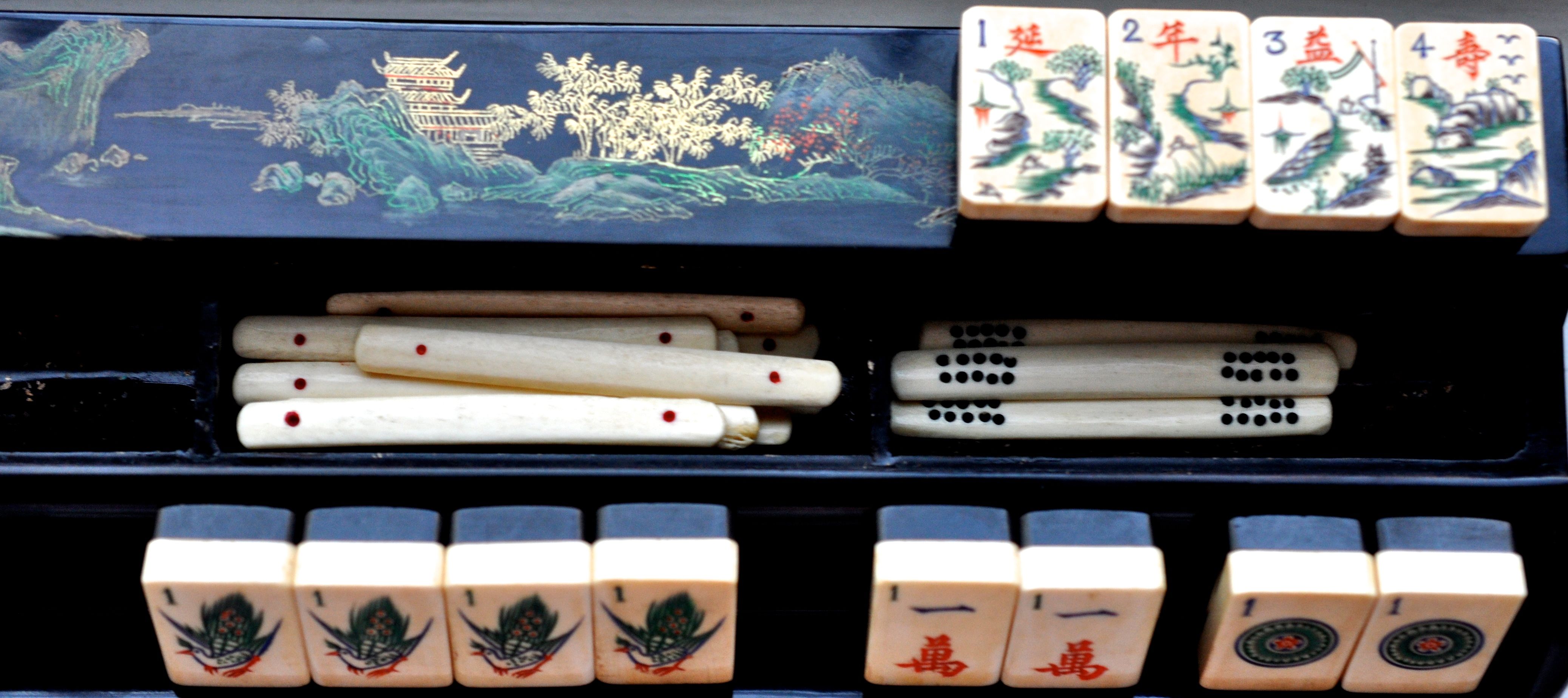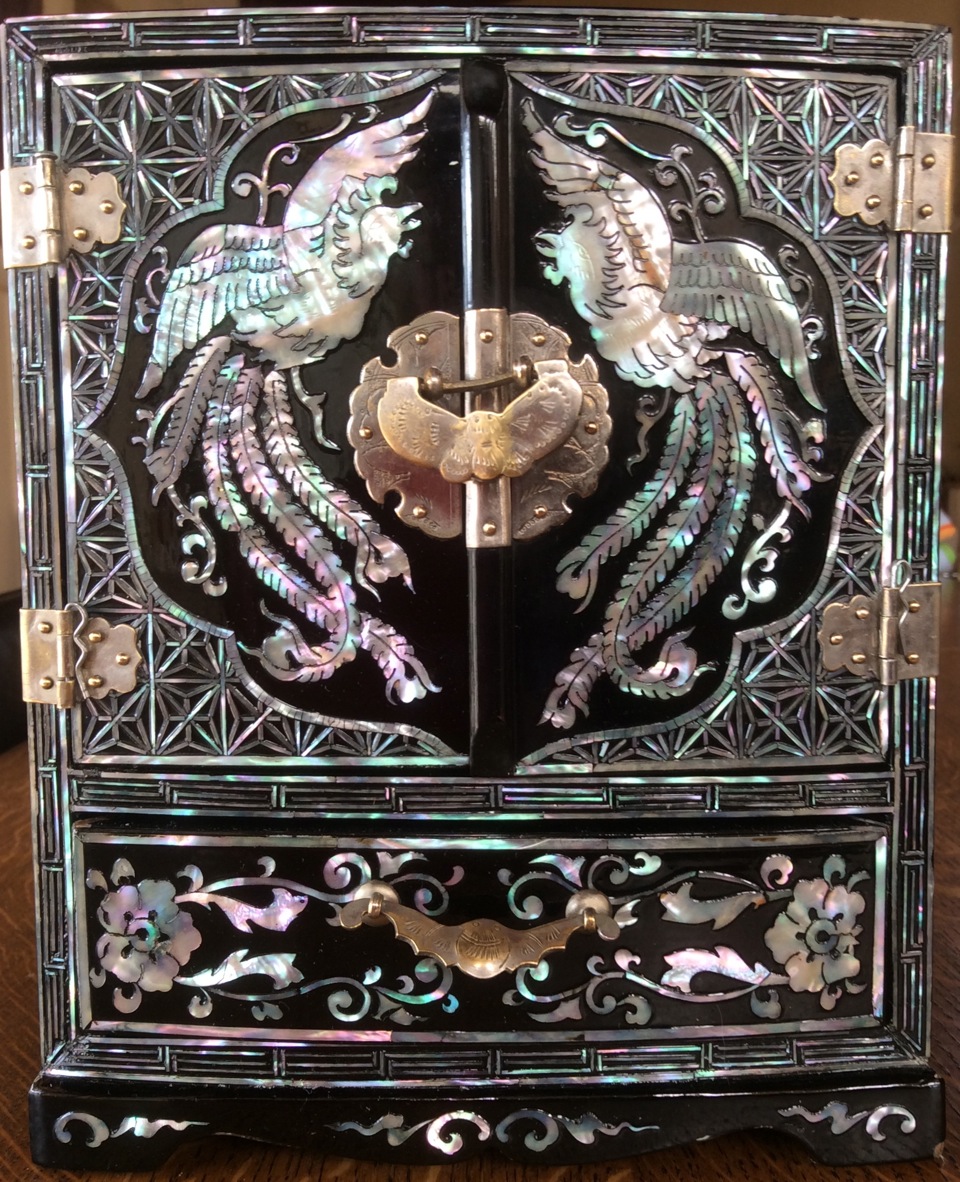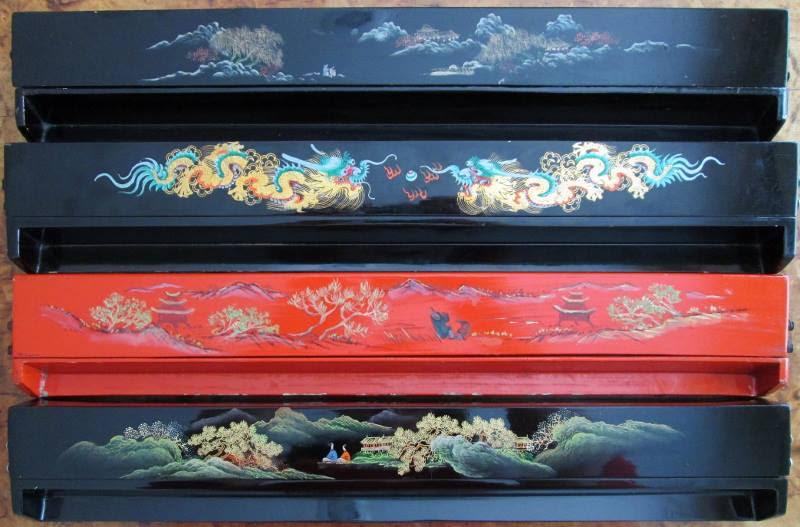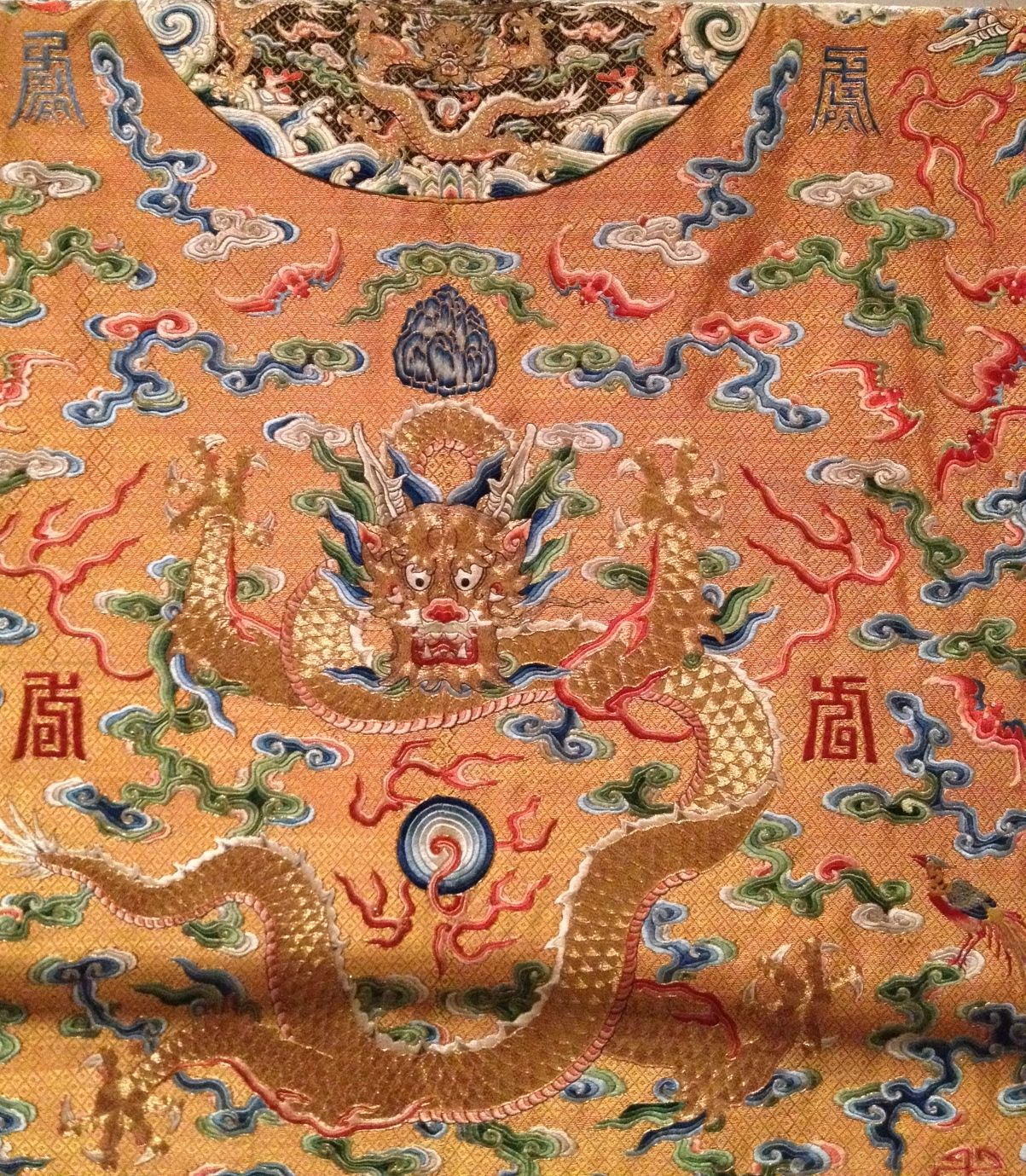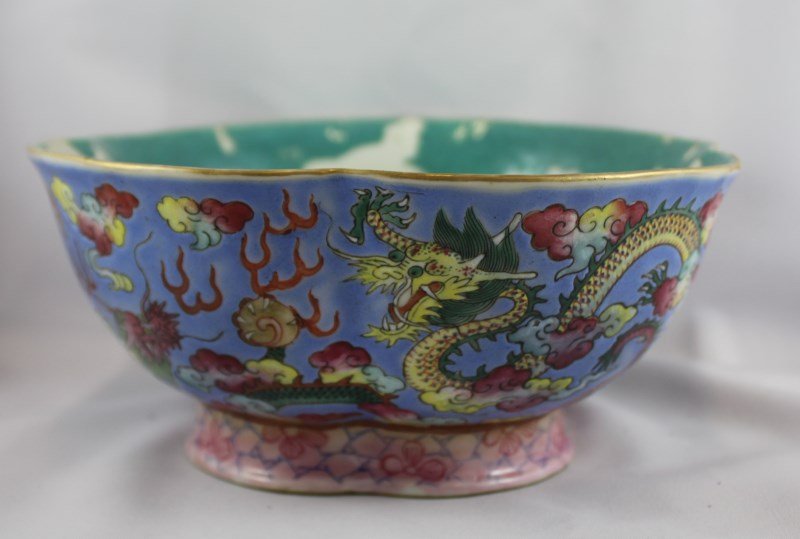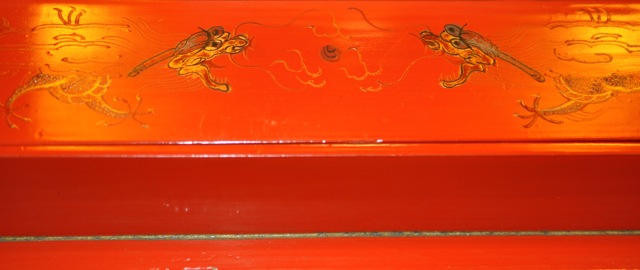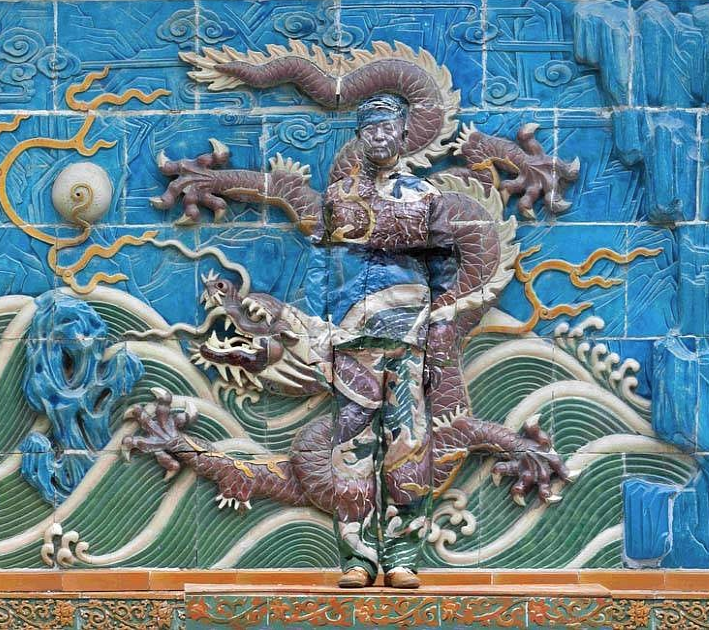From the collection of the Metropolitan Museum of Art we have this incredible wood screen, entitled Summer Palace. Made by Feng Langgong, it is painted and lacquered with gilt, and dates from 1690. As you can read in this excerpt from Wikipedia, the Chinese artists have worked in lacquer for over three thousand years.
From Wikipedia:
"During the Shang Dynasty (ca. 1600–1046 BC) of China, the sophisticated techniques used in the lacquer process were first developed and it became a highly artistic craft,[1] although various prehistoric lacquerwares have been unearthed in China dating back to the Neolithic period and objects with lacquer coating found in Japan dating to the late Jōmon period.[1] The earliest extant lacquer object, a red wooden bowl, was unearthed at a Hemudu culture (ca. 5th millennium BC) site in Zhejiang, China.[2][3][4] During the Eastern Zhou period (771–256 BC), lacquerware began appearing in large numbers, thus this was the earliest era from which notable quantities of lacquerware have survived.[5]
By the Han Dynasty (206 BC – 220 AD), special administrations were established to organize and divide labor for the expanding lacquer production in China.[6] Elaborate incised decorations were known to be used in a number of Chinese lacquerware during the Han Dynasty.[7]
In the Tang Dynasty (618–907), Chinese lacquerware saw a new style marked by the use of sheets of gold or silver made in various shapes, such as birds, animals, and flowers.[6] The cut-outs were affixed onto the surface of the lacquerware, after which new layers of lacquer were applied, dried, and then ground away, so the surface could be polished to reveal the golden or silvery patterns beneath.[6] This was done by a technique known as pingtuo.[8] Such techniques were time-consuming and costly, but these lacquerware were considered highly refined.[6] It was also the period when the earliest practice of carving lacquerware began.[9]
To see the screen in full, click here
http://www.metmuseum.org/collection/the-collection-online/search/61665
In Mahjong, lacquer was used on several accoutrememnts. Of course, lacquer could never be used on tiles, but it appears on racks and boxes.
This black lacquer rack is in pristine condition, which is an exception for this very delicate type of material. Here we see a bucolic scene with a person looking out to the palace on the mountain afar. The gold used for the trees helps them stand out against the beautiful Chinese mountains, thus the beauty of the natural world can be appreciated along with the lovely architecture of the palace.
This type of rack serves several purposes:
to line up tiles for the player, as seen above
and to store counters inside and display completed exposed groups.
Lacquer could be carved, or inlaid with other materials such as mother-of-pearl. Here follows a box with mother-of-pearl onlays.
The following Mahjong box has been shown before on this website, but it certainly is worth looking at it again. The box itself is lacquered, and then a thin mother-of-pearl layer was applied. The result is a mix of dark and light reflections, and worthy of housing a beautiful Mahjong set. Most of you know, many boxes did not start out being designed to hold Mahjong tiles. Many boxes were made for other purposes, and then adapted for Mahjong storage. Certainly a box as ornate as this one could well be in that category. The two phoenixes are fabulous, aren't they?!

